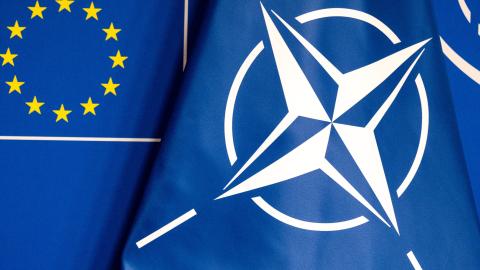NATO Secretary General Mark Rutte addressed the European Parliament last week with a clear message: Europe isn’t spending enough on defense and the new US president will not like it.
With Donald Trump’s return to the Oval Office, the issue of defense spending will once again become one of the top issues Europe must grapple with. In his first term, Trump emphasized the lack of defense spending by NATO’s European members and often criticized them for freeloading on the US. He even suggested, incorrectly, that European countries owed the US back payments, threatened to pull out of the alliance if they did not increase spending and even suggested that the US would not protect countries that did not meet spending targets.
While Trump was not the first US president to raise concerns about European defense spending, he was certainly the most vocal and direct. NATO members are expected to allocate 2 percent of their annual gross domestic product to defense, a target set in 2006 during George W. Bush’s administration. In subsequent years, this benchmark was largely ignored. By 2014, when Russia invaded Crimea, only three alliance members met the target: the US, the UK, and Greece. That year, NATO reaffirmed its commitment to the 2 percent goal by 2024.
A combination of Trump's rhetoric during his first term and Russia's increasingly aggressive behavior, culminating in the invasion of Ukraine in 2022, convinced Europeans to step up. At last year’s NATO summit, 23 out of 32 members met the benchmark. While some countries still fall short, significant progress cannot be denied. The failure of many European countries to meet the target is made worse because the definition of what can be counted toward the target is so broad. For example, members can include the amount spent on pensions for the military in the total: clearly this does not contribute to their military capabilities.
A second Trump administration is likely to focus on China and security in the Pacific, expecting Europe to shoulder more of its regional security burden to enable the US to redirect its resources. This has reignited the defense spending debate across the continent: Rutte proposed raising the defense spending benchmark to 3 percent of GDP.
Meanwhile Trump has suggested an even higher target of 5 percent. Whether this reflects a genuine goal or a negotiating tactic to aim high and settle somewhere in the middle remains unclear. Achieving it won’t be easy, even for the US. Among Trump's political base, a small but vocal movement opposes increased defense spending. This isolationist faction argues that if the US reduces its global involvement, a smaller defense budget would suffice. Currently, the US spends about 3.4 percent of GDP on defense, around $960 billion. Increasing this to 5 percent would amount to a defense budget of $1.4 trillion, a figure that seems unrealistic given the current political and economic climate in the US.
While 5 percent may be impractical, it is clear that 2 percent is insufficient. Europeans are now scrambling to justify higher defense spending and new NATO targets, but skepticism persists. Why were calls for a 3 percent benchmark absent in 2022, after Russia’s invasion of Ukraine sparked Europe’s largest security crisis since the Second World War? It makes one believe that they are considering a higher spending benchmark only because Trump is back in office. In reality, defense spending should already have increased years ago. To give credit where it is due, countries bordering Russia have recognized the stakes and risen to the challenge. Latvia, Lithuania, Estonia, and Poland already spend more than 3 percent of GDP on defense. In Poland, there is a serious drive to increase it to 5 percent. Its defense minster said last week that Poland could be “the transatlantic link between this challenge set by President Trump and its implementation in Europe.” The countries in the east need to help the Trump administration to persuade nations further from Russia, including major economies such as Spain, Germany, France, and Italy, to increase their defense investments. This will not be easy.
Every US president grapples with the dilemma of European defense spending. If Europeans resist spending more, what can the US realistically do? The American and European economies are deeply intertwined. Together, North America and Europe account for half of the world’s economy. Europe is America’s largest export market, with 48 out of 50 US states exporting more to Europe than to China. This economic relationship relies on the stability and security provided by NATO, primarily provided by the US. Should America reduce its commitment to Europe, it could jeopardize the security of its largest export market, with eventual economic repercussions at home. This is an important, if inconvenient, point that the White House must consider when threatening to leave NATO.
How the Trump administration addresses this matter will be relevant to other regions beyond Europe as well. Whether in the Middle East or East Asia, America’s partners should watch how the new administration engages with NATO allies. After all, these are some of the closest allies for the US in the world. If the US expects more burden-sharing and greater defense spending from them, there is no reason to suspect that other American allies around the globe will be let off the hook.
It is time for America’s allies and partners around the world to start asking what more they can do for their own regional security. In his second and final term in office, Trump is unlikely to turn a blind eye.




















